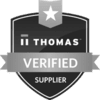Manufacturing System Integration
Manufacturing system integration is an important part of factory design and development. Proper integration of system components will ensure that the entire line functions together without any hold-ups or downtime.
At Bent River Machine, manufacturing system integration begins with the project specification. Whether the line is assembling, testing, packing, or all three, we’ll make sure the chosen equipment will function smoothly as a unified line.
Once your project is manufactured and procured, we perform mechanical and electrical integration. After the system is installed, the real work begins, making all the subsystems talk to one another and “handshake.” Post-programming, extensive testing, and checkout will occur to ensure correct operation and recovery.
Our service goes beyond just building and installation. Before our team departs your facility, employees will be trained on operation and maintenance. We also will assist you with any technical support, modifying the controls to make them more user-friendly if needed, and other important details.
Benefits of Manufacturing System Integrators
Partnering with a manufacturing system integrator like Bent River can deliver several advantages to your production line:
- Impartial Analysis of Design Plans: Manufacturing system integrators have the specialized expertise and professionalism to provide honest feedback to clients.
- Free Up Internal Resources: Working with an external manufacturing system integrator frees up internal resources, keeping your in-house processes and operations running smoothly.
- Diverse Industry Experience: Skilled manufacturing system integrators bring their wealth of experience in various industries and projects, providing insight into applications like yours.
- Accountability: Manufacturing system integrators have a vested interest in delivering an effective solution to clients. They want their name associated with a successful integration.
Manufacturing Systems Integration Process
Manufacturing system integration solutions typically follow a systematic process to bring your project to completion. Bent River Machine’s manufacturing system integration process follows these steps:
- Understanding User Requirements and/or System Requirements: The system integration process begins with understanding your specific requirements. This formal review process will help reduce the chance of omissions, miscommunications, and errors.
- Conducting Preliminary/Critical Design Review (PDR): As part of the preliminary design review, we carry out a functional decomposition of the system and define specifications for lower-level equipment and assemblies. This step in the process is the gateway to design.
- Manufacturing & Fabrication: Our machinists fabricate the custom metal components necessary for your system, using CNC machining, bending, cutting, and welding. We then assemble the components into the required equipment or build.
- Performing Site & Factory Acceptance Tests of System/Equipment: Factory Acceptance Testing (FAT) is a process where the final system is tested for quality and performance in our facility. A Site Acceptance Test (SAT) is conducted at your facility to confirm that system performance there is comparable to the FAT.
Comprehensive Manufacturing Systems Integration by Bent River
Manufacturing systems integration is essential to automating your manufacturing, assembly, or packaging line. When you work with a reputable manufacturing systems integrator, you will get a solution from start to finish, freeing up your internal resources for your core competencies.
Bent River Machine designs, fabricates, and tests comprehensive manufacturing system integration solutions for our customers’ unique needs. Our integration services unite multiple subsystems into a single system, streamlining your production process. We offer competitive pricing, on-time delivery, and high-quality equipment from our state-of-the-art, ISO 9001:2015-certified facility.
Request a quote to speak with a specialist about your manufacturing systems integration requirements.



